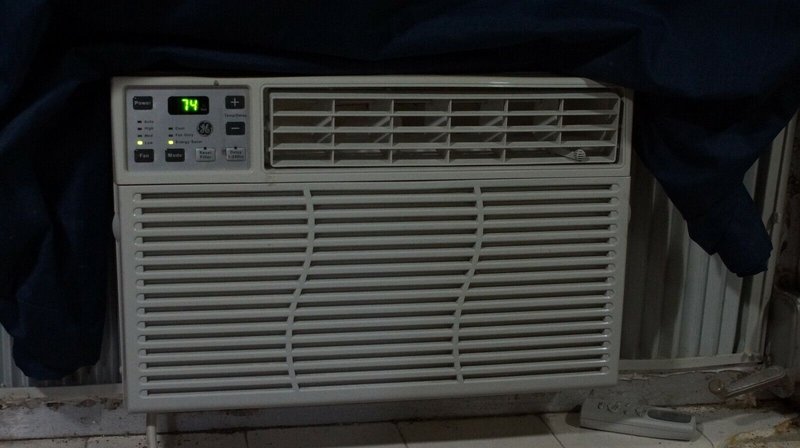
Understanding these error codes can feel a bit like unraveling a mystery, especially if you’re new to the world of appliances. But with a bit of patience and the right guidance, you’ll be well on your way to tackling this problem. The E3 error code is generally related to a communication issue within the unit or a problem with its components. Let’s break it down in simpler terms — imagine your air conditioner is a band, and for some reason, the drummer (a crucial component) isn’t keeping time. The whole performance is thrown off, and the E3 code is the audience’s way of booing to get the band back on track.
Understanding The E3 Error Code
So, what exactly does this E3 code mean? At its core, the E3 error signifies trouble in paradise, indicating that something is not right within the system. In many GE air conditioners, this error is commonly linked to the unit’s temperature sensor. Picture the temperature sensor as the thermostat’s assistant, constantly measuring the room’s temperature and helping the unit adjust accordingly. If this sensor is on the fritz, it can’t accurately read the temperature, causing your air conditioner to throw its hands up with an E3 error.
The root of this problem could lie in a simple malfunction of the sensor itself. Sensors, like any other electronic component, can wear out or become faulty over time. They might stop working correctly if there’s dirt or a mechanical issue blocking their path. Imagine trying to read a thermometer that’s covered in grime — tricky, right? The same goes for your air conditioner’s sensor.
If you’ve got an E3 error, it’s a good idea to examine the sensor for any obvious signs of damage or blockage. Sometimes, giving it a gentle clean can resolve the issue. However, if the sensor looks damaged or cleaning doesn’t help, it may need replacing. Here’s the deal: if you’re not comfortable tinkering with your A/C’s internal parts, it might be best to call in a professional to avoid causing further damage.
Potential Causes of the E3 Error Code
There are a handful of usual suspects that might trigger the elusive E3 error. One of the most common is a faulty sensor, as we’ve discussed. However, other culprits could be lurking under the hood. Loose or disconnected wires might also be to blame. Imagine the air conditioner as a tightly knit community; if one member (a wire, in this case) loses connection, it can halt communication and cause problems, much like a dropped call.
Another potential cause could be issues with the circuit board. The circuit board is the brain of your air conditioner, directing all the activities within the unit. If it’s malfunctioning, it can easily throw off the entire operation, much like how a conductor leads an orchestra. If this is the case, you might notice other odd behaviors from your air conditioner, like inconsistent cooling or strange noises.
Moreover, power surges or electrical issues in your home can also result in an E3 error. A sudden spike in electricity can fry sensitive parts of the air conditioner, leading to breakdowns. To prevent this, consider using a surge protector for your appliance. If electrical issues are frequent, it might be worth having a professional inspect your home’s wiring.
Resolving The E3 Error Code
Now that we’ve dissected the E3 error and its possible causes, let’s dive into how you can resolve it. First off, try resetting your air conditioner. This is sometimes all it takes to clear the error. To do this, simply unplug the unit, wait about five minutes, and then plug it back in. Think of it as giving your air conditioner a quick nap, which might help it shake off any temporary glitches.
If resetting doesn’t do the trick, it’s time to inspect. Start with the temperature sensor, as it’s a frequent culprit. Look for any signs of damage or disconnection. If a wire seems loose, reconnect it firmly. However, avoid forcing anything into place, as this can cause more harm than good. For electrical issues, having a qualified technician on hand is always a smart move.
In cases where the E3 error persists despite your best efforts, don’t sweat it! Contacting a professional technician will ensure that any complex issues are addressed properly. Remember, there’s no shame in calling for backup. Preventative maintenance, like regularly cleaning your air conditioner and checking for signs of wear, can also help ward off future problems.
Prevention is Key
No one wants to see an error code flashing on their air conditioner. So, how do we keep E3 and its bothersome pals at bay? Regular maintenance is your best friend here. Just like how you’d service a car, your air conditioner thrives on periodic check-ups. Dust and debris build-up can lead to sensor issues and more, so giving your unit a good cleaning every now and then is essential.
Additionally, monitoring your air conditioner during peak seasons, when it’s working hardest, can prevent surprise breakdowns. Pay attention to unusual sounds, leaks, or reduced efficiency as these can be early warning signs. Keeping an eye out for these indicators can save you from dealing with more significant issues down the line.
By taking these small, proactive steps, you’ll keep your GE air conditioner running smoothly and mitigate the chances of encountering that pesky E3 error again. When in doubt, remember, it’s always better to address issues early on than to wait for them to escalate!